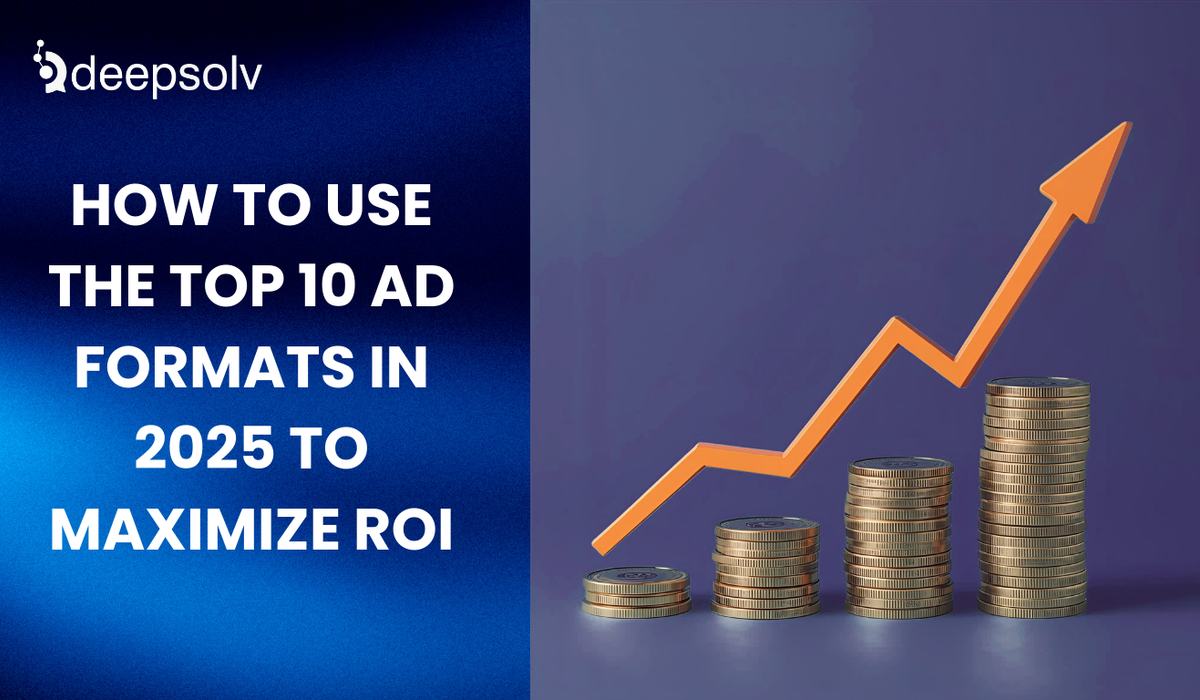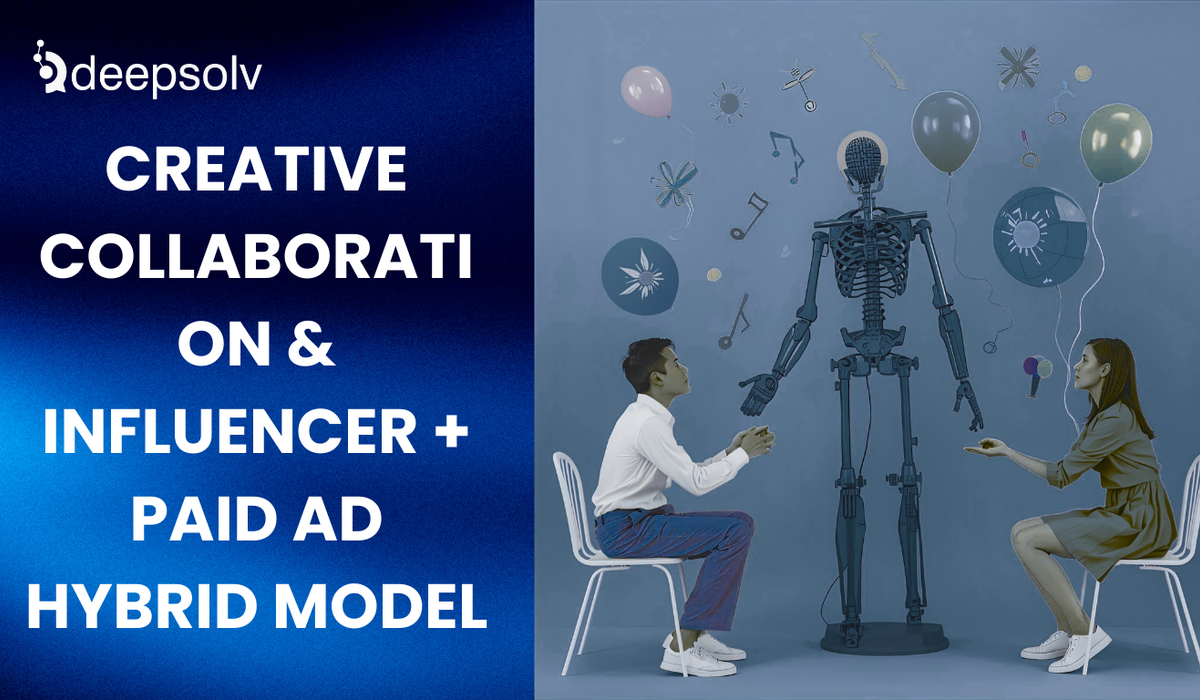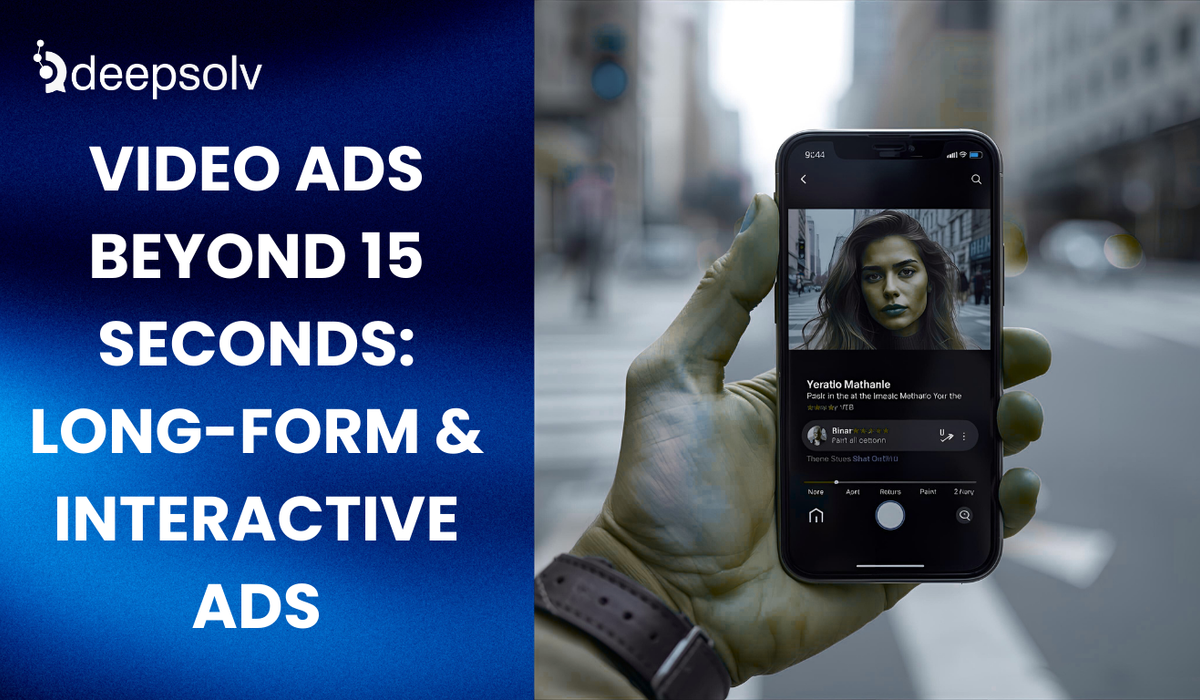How to Use the Top 10 Ad Formats in 2025 to Maximize ROI
5 min read
Published: 9/25/2025

Why Ad Formats Matter in 2025
By 2025, ad formats are no longer just creative “wrappers.” They shape how your message is consumed, how algorithms treat your campaigns, and how audiences engage with your brand. With Meta, TikTok, and other platforms emphasizing immersive, interactive, and native-first experiences, the ad format you choose can make or break ROI.
- Shorter attention spans mean the first 1–3 seconds count more than ever.
- AI-powered ad delivery increasingly favors formats that keep people engaged (like Reels and Stories).
- Interactivity and shoppability are becoming expected, not optional.
- Ad fatigue hits faster, formats must be rotated and adapted to avoid performance drops.
In this blog, we’ll cover the top 10 ad formats for 2025, how to use them strategically, creative tips, and real-world examples from DTC brands that cracked the code.
The Top 10 Ad Formats in 2025
Here’s the definitive list of formats you should be using to maximize ROI this year:
- Single Image Ads
- Short-form Video Ads (Reels, Stories, In-Feed)
- Carousel Ads
- Collection & Instant Experience Ads
- Stories Ads (Vertical Full-Screen)
- Playable & Interactive Ads
- Lead Form / Instant Form Ads
- Messenger & Chat Ads
- Slideshow & Lightweight Motion Ads
- Companion / Overlay Ads
Deep Dive Into Each Format
1. Single Image Ads
Why it works: Sometimes, simplicity converts best. Clean, bold image ads remain a low-cost way to test hooks and offers.
Best practices:
- Use one hero product image.
- Keep copy minimal (max 20% overlay text).
- Use high contrast to stop the scroll.
Example: Allbirds runs static ads with bold lifestyle imagery and the line “Better Shoes for a Better Planet.” The simplicity communicates values and product benefit instantly.
2. Short-form Video Ads (Reels, Stories, In-Feed)
Why it works: Meta’s algorithm in 2025 rewards immersive, short-form vertical video. Videos drive deeper engagement and tell stories static images can’t.
Best practices:
- Hook in 1–2 seconds.
- Design vertical-first (9:16).
- Always add captions (80%+ watch muted).
Example: Glossier runs 15-second “get ready with me” reels showing real users applying products. It feels native, not like an ad, and generates organic-like engagement.
3. Carousel Ads
Why it works: Lets you tell a sequential story or showcase multiple products.
Best practices:
- Use card sequence logically (step-by-step demo, product features, or a narrative arc).
- Keep a consistent design thread.
- End last card with a strong CTA.
Example: Warby Parker runs carousel ads walking users through choosing frames, adding prescription, and checking out. Each swipe answers a potential customer objection.
4. Collection & Instant Experience Ads
Why it works: Turns the ad itself into a mobile storefront, reducing friction.
Best practices:
- Use a strong cover image or video.
- Ensure product thumbnails are clean and clickable.
- Include seasonal or curated collections.
Example: ASOS uses collection ads featuring “Spring Fits Under $50,” allowing users to browse and buy directly in the ad.
5. Stories Ads (Vertical Full-Screen)
Why it works: Native to Instagram and Facebook, these ads feel seamless in-feed and achieve high completion rates.
Best practices:
- Use bold animations and stickers.
- Place CTA at the bottom (swipe-up / tap).
- Keep under 15 seconds.
Example: Nike ran Stories ads for Air Zoom sneakers with AR filters letting users “try on” the shoes virtually.
6. Playable & Interactive Ads
Why it works: Try-before-you-buy experiences boost intent, especially for apps and games.
Best practices:
- Keep interactions short (under 10 seconds).
- Showcase one key feature.
- CTA immediately after interaction.
Example: Headspace offered playable snippets of its meditation app, letting users try a 60-second breathing exercise inside the ad.
7. Lead Form / Instant Form Ads
Why it works: Capture leads without requiring users to leave the app.
Best practices:
- Limit fields (name, email, phone max).
- Offer a clear incentive (discount, freebie).
- Use pre-filled fields for frictionless signups.
Example: MasterClass runs lead form ads offering “Free 7 Lessons” in exchange for an email. Pre-filled forms make signups effortless.
8. Messenger & Chat Ads
Why it works: Conversational selling is rising. Ads that open chats allow brands to nurture users in real-time.
Best practices:
- Use quick replies (Yes / No).
- Personalize bot flows.
- Escalate to human agents for high-intent leads.
Example: Sephora runs Messenger ads offering personalized makeup advice. Users click, answer 3 quick questions, and get tailored product recommendations.
9. Slideshow & Lightweight Motion Ads
Why it works: Ideal for regions with lower bandwidth. Combines images into a video-like format.
Best practices:
- Use 3–5 slides.
- Add text overlays.
- Highlight key product benefits.
Example: Unilever ran slideshow ads in Southeast Asia, combining images of detergents with animated captions, cutting costs while reaching bandwidth-limited users.
10. Companion / Overlay Ads
Why it works: Keeps branding visible across omnichannel campaigns, especially CTV.
Best practices:
- Sync companion ads with main video creative.
- Use strong CTAs (“Shop Now”).
Example: Spotify runs CTV ads paired with clickable companion banners, making the transition from brand awareness to action seamless.
Format + Funnel Alignment: The ROI Secret
Maximizing ROI isn’t about using all 10 formats at once—it’s about matching format to funnel stage:
- Awareness: Video, Reels, Stories
- Consideration: Carousel, Collection, Messenger
- Conversion: Lead Forms, Instant Store, Companion Ads
- Retention/Upsell: Chat Ads, Stories, Lightweight Motion
When layered together, formats work like a funnel engine, moving users from discovery to conversion seamlessly.
How Deepsolv Fits In
Brands that thrive in 2025 are those that don’t just create ads but engage with responses at scale. Ads that invite engagement- comments, questions, shares outperform those that don’t.
Here’s where Deepsolv’s tools come in:
- Brandy: Automates comment replies on ads, hiding negativity and engaging leads instantly.
- Adam: Optimizes ad creative by analyzing which formats and hooks resonate most, helping brands double down on winning formats.
This combination ensures your campaigns don’t just run- they learn and improve, turning formats into ROI machines.
The brands scaling fastest in 2025 aren’t guessing- they’re using AI to optimize every step. Don’t let your competitors outpace you. Schedule your free strategy call with Deepsolv today and see how Adam + Brandy can multiply your ROI before your next campaign goes live.
FAQs
Frequently asked questions related to this blog post



